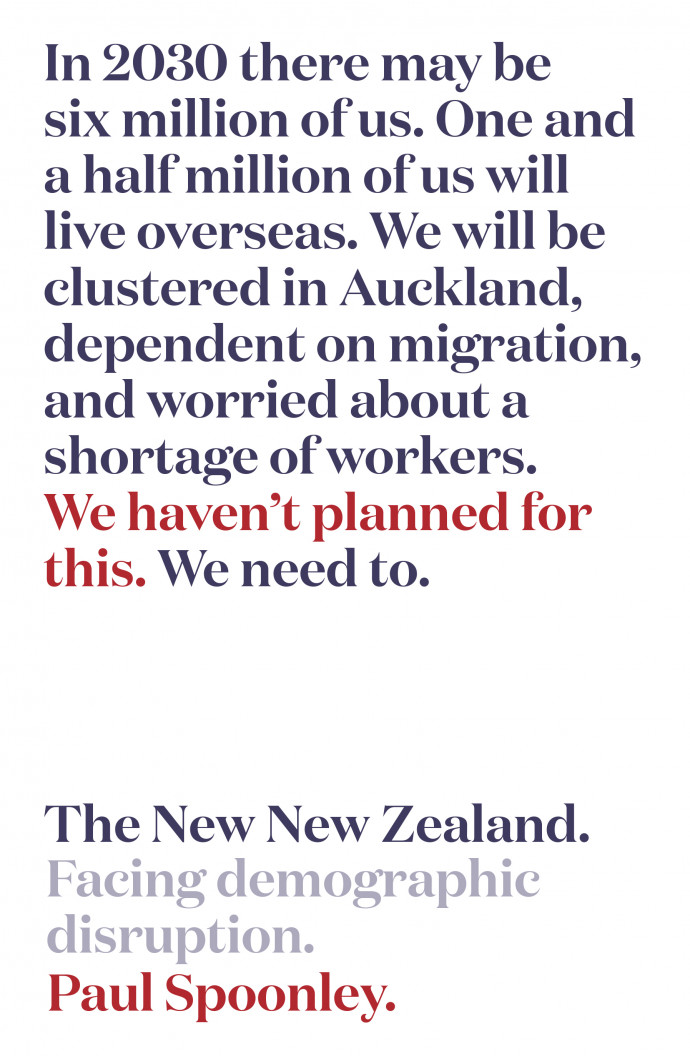The New New Zealand: Facing demographic disruption

Distinguished Professor Paul Spoonley FRSNZ, has recently published a book on New Zealand’s changing demography, in part to remind New Zealanders that while they should consider the country’s future in terms of the disruptive consequences of climate change or technology, equally significant is the demographic transformation that is under way.
New Zealand, like many high-income societies, has entered the fourth stage of the Demographic Transition Model which is characterised by low birth and low death rates. New Zealand’s fertility rate is now below replacement level (the number of births in recent years are not sufficient to replace the existing population) and, if the fertility experience of other countries is echoed here, then the rate will continue to drop. Will we become a very-low fertility country like Taiwan, Portugal or Singapore? And what does that mean? Can we reverse decling rates of fertility?
This downward trend is compounded by ageing – structural and numerical – of New Zealand. Baby boomers (currently aged between 56 and 74) are boosting the numbers of those aged over 65, from 600,000 in 2013 to well over a million in the early 2030s. The increased numbers are paralleled by the impact on the population shape of New Zealand. Many more of us, soon to be one in four, will be aged over 65. We will reach an interesting tipping point not too far off when there will be over 65s than those under the age of 15.
The 20th century experience of being a young-dominant is being replaced by one which is old-dominant and the classic pyramid shape of a population – with a wide base – is being inverted.
A lot was made of the fact that New Zealand reached a total population of 5 million in March 2020, much earlier than anticipated. (The original estimation was that this figure would be reached in 2031). Natural growth played a role in the early part of the 17 years it took to add another million but net migration gains played a significant part from 2013 to 2020. Two-thirds of population growth now came from this source, although COVID-19 has put a dramatic halt to migration numbers.
The outcome from both contemporary immigration policies (a points system) combined with a period of high inward migration, both permanent and temporary, has continued to significantly alter the ethnic make-up of New Zealand communities. Even with the halt imposed by COVID-19, projections are that minority ethnic and religious communities will constitute a much larger proportion of the New Zealand population over coming decades.
One other ongoing change is the distribution of the New Zealand population, with recent growth as well as that projected to occur disproportionately in the upper part of the North Island. We anticipate that 60% of the country’s population growth through to 2038 will occur in Auckland, with important overspill growth in Hamilton and Tauranga. Elsewhere, about three-quarters of Territorial Authorities will experience population or decline. This unevenness of both population growth and the age structures of communities could be changed but not with the current toolkit of economic and population drivers.
We have seen the end of a phase of rapid population growth in most countries. New Zealand has been late to the party. The country’s fertility rate remained higher than most and the gains from net migration were high compared to similar countries. The decade through to 2030 will see a very different New Zealand emerge, as much from changes to its population mix and location, as to shifts in the nature of work or the impacts of technology. The political and policy question is whether the significance of this demographic changes are adequately understood or whether we are prepared to adjust our policy approaches and frameworks to accommodate what is a major transformation in who we are.
It is not a crisis (even if at times it feels like it) but something that needs more of our attention and some appropriate policy responses. Are our policy-makers and politicians up to the task?
Paul Spoonley is a Distinguished Professor in Sociology at Massey University. His book, “The New New Zealand. Facing Demographic Disruption” is published by Massey University Press.
